Graphics Reference
In-Depth Information
Section 2.2.3
2.2.3.1.
Prove Theorem 2.2.3.1.
2.2.3.2.
Find the reflection S about the line
L
defined by the equation 2x + y = 2. Find S(-5,0)
and S(0,4).
(a)
Solve the problem using the definition like in Examples 2.2.3.2 and 2.2.3.3 but
check your answer using Proposition 2.2.3.4.
(b)
Solve the problem using the reductive method like in Example 2.2.3.7.
2.2.3.3.
Let S be the reflection about the line
L
through the points (2,3) and (4,1). Find the
equation for S like you were asked to do in Exercise 2.2.3.2.
2.2.3.4.
Suppose that R
1
and R
2
are reflections about the lines
L
1
and
L
2
, respectively. Let R =
R
2
R
1
.
(a)
If
L
1
and
L
2
intersect in a point
A
, show that R is a rotation about
A
. Find the rela-
tionship between the angle of this rotation and the angle between the two lines.
(b)
If
L
1
is parallel to
L
2
, show that R is a translation.
Section 2.2.4
2.2.4.1.
Prove Theorem 2.2.4.6.
Section 2.2.7
2.2.7.1.
Prove the converse to Theorem 2.2.7.1.
2.2.7.2.
Which of the transformations M below are motions? Explain your answers. In par-
ticular, express those that are in the form of a composite of a translation, rotation,
and/or reflection:
3
5
4
5
5
2
1
2
()
aMx
:
¢ =
x
+
y
-
6
()
bMx
:
¢ =
x
+
y
+
1
4
5
3
5
1
2
5
2
y
=-
x
+
y
+
1
y
¢ =
x
-
y
+
3
3
2
1
2
8
3
1
3
()
()
cMx
:
¢ =+
x
y
dMx
:
¢ =
x
+
y
+
7
1
2
1
2
1
3
8
3
y
¢ =--
x
y
2
y
¢ =
x
-
y
2.2.7.3.
(a)
Find the equation for the rigid motion M which sends
A
(2,-1),
B
(4,1) to
A
¢(-3,3),
B
¢(-1,1), respectively. Use only translations, rotations, and/or reflections.
(b)
Find the equation of
another
motion that sends
A
and
B
to
A
¢ and
B
¢,
respectively.
2.2.7.4.
Find the equation of the motion M that sends
A
(-2,1),
B
(0,2), and
C
(-2,4) to
A
¢(4,0),
B
¢(6,-1), and
C
¢(4,-3), respectively. Use only translations, rotations, and/or reflections.

